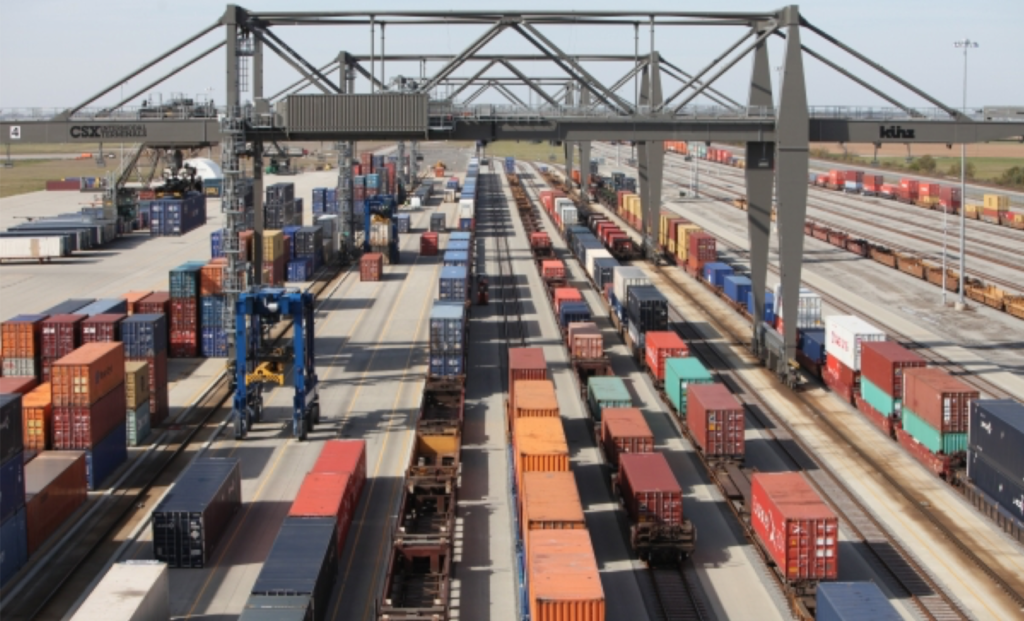INDEPENDENT ANALYSIS
CN’s Milton Intermodal Terminal: The Wrong Yard in the Wrong Place at the Wrong Time

Rail-based intermodal freight is a modern, innovative and environmentally superior form of transportation – but not when it is used as a means to build a company’s real estate profits at the expense of a community, its residents and their visionary official plan.
CN’s proposed Milton terminal fits this category to a T, despite what the railway says publicly. While the community has been promised that this truck-to-rail terminal will only serve four Halifax-Chicago freight trains, this is just a foot in the door. Unstated is the fact that CN’s Brampton Intermodal Terminal is a poorly designed and poorly located holdover from the 1970s that no longer fully meets its operating needs. On the other hand, it would yield a real estate bonanza if it could be replaced by a more efficient terminal elsewhere – such as Milton.
A question that must be asked is why CN has acquired 405 hectares for its Milton terminal when it says it only requires 162. That massive cushion of extra land could easily swallow all of the current Brampton intermodal operation, which sits on 81 hectares of valuable real estate that has rising redevelopment potential.
As well as violating the land use planning objectives of the Town of Milton and Halton Region, an intermodal terminal on the site CN has assembled will ultimately fail to even meet its own objectives, if it intends to be an efficient and shipper-responsive rail service provider.
From a railway operating perspective, the Milton site works reasonably well. The extra-long intermodal trains of today would smoothly enter and depart this yard, which is not the case at the current CN Brampton terminal. It is a cramped, stub-ended yard that cannot provide for easy train access or container loading and unloading. And it can’t be expanded.
But CN’s Milton site is badly flawed for another and more serious reason.
Ideally, new intermodal terminals must be built beyond the road congestion generated by the large urban regions they serve, allowing the trucks carrying the containers to move in and back out of the core as easily as possible. Putting a new terminal this close to the worst of the region’s congestion on a frequently-gridlocked highway corridor is doomed to failure.
CN is avoiding the fact that it actually requires two intermodal terminals, one on either side of the Greater Toronto and Hamilton Area. One should be built just east of Oshawa – which it has investigated – adjacent to the 401, close to the 407 and alongside CP’s Toronto-Montreal main line, where it could be shared advantageously by the two railways.
CN’s western terminal should be built farther west on its main line, close to the junction of the 401 and 403 near Woodstock, on land zoned for industrial use. This has been recommended in a soon-to-be-released report on improved rail service in Southwestern Ontario.
Also weighing against the proposed CN Milton terminal is its impact on local road congestion and costs. While it would be close to the 401 and 407, it will generate heavy truck traffic that will inflict substantial damage on the local roads leading to those main highways. The cost will come out of the citizens’ taxes.
Furthermore, emissions and noise from these terminals have become major issues in many other locations. An intermodal terminal project in Los Angeles was rejected recently under the strict requirements the state and local public agencies are now applying to these operations. CN’s plan falls far short of meeting these California environmental standards or those of various other public agencies across North America.
In short, CN has either not done its homework or is not telling Milton residents the real impacts of its proposed terminal and the alternatives available. A full and transparent environmental assessment that addresses all these issues is an absolute necessity before it proceeds.
Greg Gormick is a nationally-known rail consultant and government policy advisor on transportation issues. In 1989-1991, he was CN’s assistant manager of intermodal research. From 1998 to 2001, he advised CN on strategic communications, including its first attempt to build the Milton Intermodal Terminal.